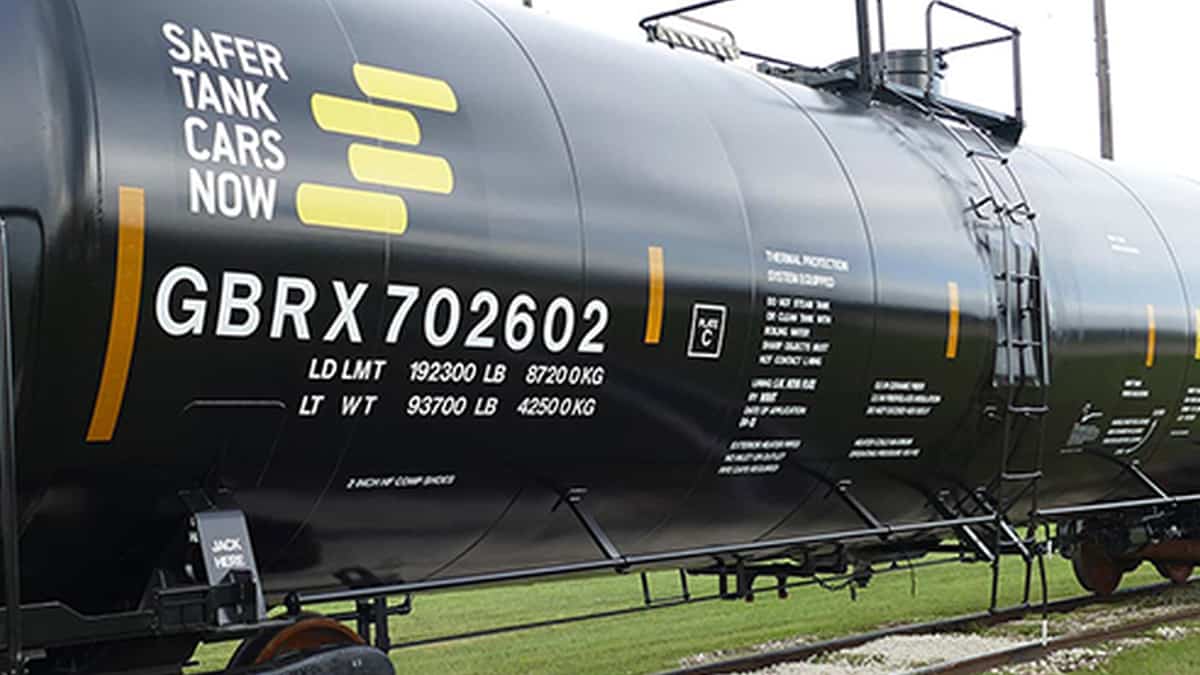Railcar manufacturer and lessor Greenbrier (NYSE: GBX) has cut its North American workforce by 40%, limited its production capacity and idled manufacturing at its flagship facility in Oregon, all to survive the storm brought about by the coronavirus pandemic and the recession.
“Greenbrier, in the face of the dual challenges of the pandemic and the economy, has taken swift, decisive and difficult actions. Undoubtedly, more will be demanded of us in the months ahead. Yet I am confident that Greenbrier’s management team is up to the test,” said Bill Furman, Greenbrier’s CEO, during the company’s third-quarter fiscal year results call on Friday.
Within the past three months, Greenbrier suspended its railcar manufacturing and operation lines at the Gunderson facility in Portland, Oregon, and it eliminated a “wide range” of administrative positions within the business units and corporate departments, Furman said. Greenbrier also idled capacity at other North American facilities, including those affiliated with Greenbrier Rail Services.
“It was especially hard to part with workers at Gunderson who had persevered with us through many down cycles and natural through financial emergencies over the course of our 35-year ownership of that operation dating back to the FMC Marine and Rail division and dating back to the Gunderson Brothers’ business begun on the waterfront in 1918,” Furman said, He added that the marine business will remain at Gunderson amid a “strong pipeline” for new vessel orders for calendar year 2021.
As a result of these efforts, Greenbrier shed 1,600 employees in North America, on top of almost 4,000 positions that were eliminated in Greenbrier’s first and second quarters, he said. Greenbrier had shed those positions earlier in its fiscal year to weather the downturn in railcar demand in North America, with most of those eliminations occurring at two of its three facilities in Mexico. It was also seeking to reduce the size of its manufacturing footprint in Brazil, the U.S. and Mexico in response to the slower market.
“We’re focused on liquidity, cost reduction, capital preservation, respect for capital,” Furman said.
With the COVID-19 virus still prevalent in the U.S., Mexico and Brazil, Greenbrier’s safety protocols include preventing plantwide outbreaks by limiting workers’ exposure to affected individuals. Furman also said Greenbrier’s manufacturing paints are “meeting or exceeding” the workplace recommendations of the U.S. Centers for Disease Control and Prevention.
“A small fraction” of Greenbrier’s 13,000-plus employees have tested positive for the virus.
The pandemic cost Greenbrier approximately $3.9 million in the third quarter for items such as personal protective equipment, additional labor and interest expenses, and cleaning services.
With the pandemic still ongoing, Greenbrier said Furman would continue in his role as CEO until September 2022. Furman also agreed to reduce his compensation and extend the voluntary reduction of his base pay between now and 2022.
“The current COVID-19 crisis and accompanying environment of economic uncertainty requires an experienced industry and management team to lead Greenbrier through extraordinary times,” the company said Friday.
Railcar demand and third-quarter highlights
The company, which had been seeking more international business in recent quarters, said even though Europe’s economy is “slowly reopening,” business will take several months to return to pre-COVID levels, according to Lorie Tekorius, Greenbrier’s chief operating officer.
Meanwhile, Brazil’s economy is still struggling amid the pandemic, and Greenbrier is working with local management teams to ensure safe operations at its plants, Tekorius said.
Greenbrier received orders for 800 railcars in the third quarter, with their order value worth about $65 million. Over 50% of these orders were from international sources. The company also delivered 5,000 railcars, and it syndicated or sold 1,600 units as part of its lease syndication program.
The company’s backlog stands at 26,700 units valued at $2.7 billion.
To cut costs, Greenbrier reduced its capital expenditures budget by $50 million, and it slashed annual overhead at its facilities by $65 million. Its selling and administrative (S&A) expenses were $49 million, with potentially more reductions in store for the fourth quarter and into 2021, the company said.
Greenbrier’s third-quarter net profit on an adjusted basis was $35.1 million, or $1.05 in adjusted diluted earnings per share, compared with $15.3 million, or 46 cents in adjusted diluted earnings per share, for Greenbrier’s second quarter.
Higher railcar deliveries helped the company see third-quarter revenue of $762.6 million, compared with $623.8 million in the second quarter.
Third-quarter revenue rose 33% for Greenbrier’s manufacturing segment to $653 million. But revenue for the wheels, repair and parts segment fell 10% to $82 million on lower volumes, while revenue for leasing and services slipped almost 36% to $27.5 million. Greenbrier said the decline was due in part to higher volumes of externally sourced railcar syndications.
Click here for more FreightWaves articles by Joanna Marsh.
Related articles:
Idled production, layoffs continue at Greenbrier










